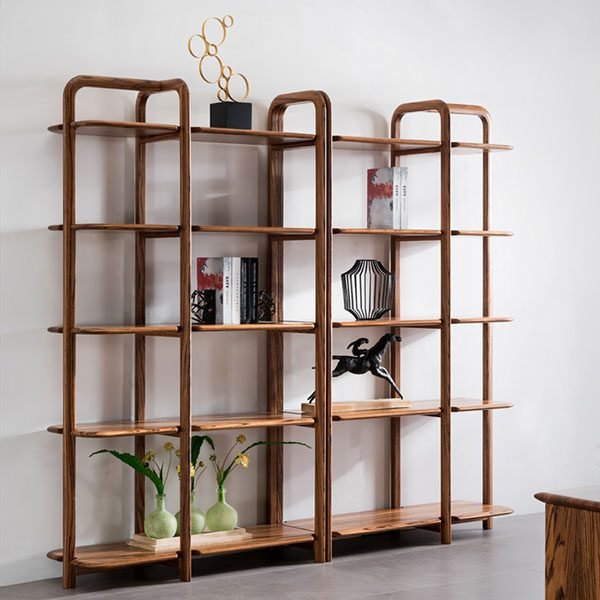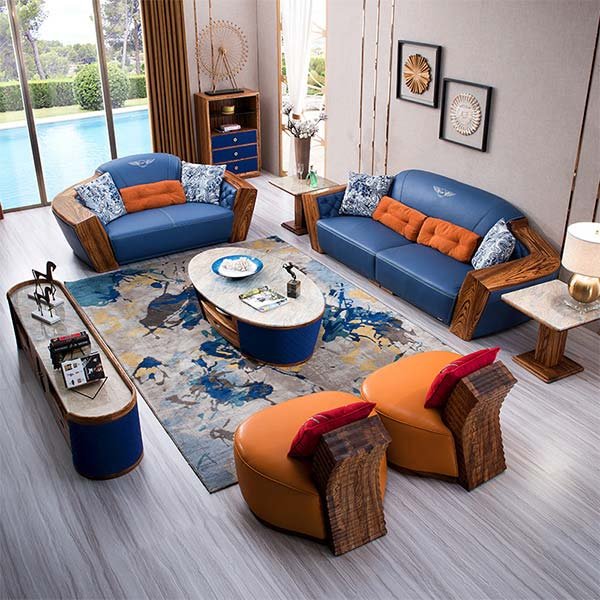“Maximize space, minimize clutter – the key to a cozy small living room!”
Utilize multi-functional furniture
When it comes to decorating a small living room, one of the most important things to consider is how to position your furniture in a way that maximizes space and functionality. One great way to achieve this is by utilizing multi-functional furniture.
Multi-functional furniture is a great solution for small living rooms because it allows you to make the most of the limited space you have. For example, a sofa bed can serve as both seating during the day and a bed for guests at night. This can be a great space-saving solution for those who don’t have a separate guest room.
Another option is a coffee table with storage. This type of furniture not only provides a surface for drinks and snacks, but also offers a place to store books, magazines, and other items that would otherwise clutter up the room. This can help keep your living room looking neat and organized.
In addition to multi-functional furniture, another way to maximize space in a small living room is by choosing furniture that is the right scale for the room. This means avoiding oversized pieces that can overwhelm the space and opting for smaller, more streamlined furniture instead.
For example, instead of a large sectional sofa, consider a smaller loveseat or a couple of armchairs. This can help create a more open and airy feel in the room, making it appear larger than it actually is.
When arranging your furniture, it’s also important to consider the flow of the room. Make sure there is enough space to move around comfortably and that the furniture is arranged in a way that allows for easy conversation and interaction.
One way to achieve this is by creating distinct zones within the room. For example, you could have a seating area with a sofa and chairs, a reading nook with a comfortable armchair and a lamp, and a TV-watching area with a media console and a cozy rug.
By creating these distinct zones, you can make the most of the space you have and ensure that each area serves a specific purpose. This can help make your small living room feel more functional and organized.
In conclusion, when it comes to positioning furniture in a small living room, utilizing multi-functional furniture is key. By choosing pieces that serve more than one purpose, you can maximize space and create a more functional and organized living room. Additionally, choosing furniture that is the right scale for the room and arranging it in a way that promotes good flow can help make your small living room feel larger and more inviting.
Create a focal point
When it comes to decorating a small living room, one of the most important aspects to consider is how to position your furniture in a way that maximizes space and functionality. One key strategy to achieve this is to create a focal point in the room.
A focal point is a central element that draws the eye and anchors the room. It can be a fireplace, a piece of artwork, a large window, or even a statement piece of furniture. By creating a focal point, you can help to organize the layout of the room and make it feel more cohesive.
When choosing a focal point for your small living room, consider the size and shape of the room, as well as the existing architectural features. If you have a fireplace, for example, you can position your furniture around it to create a cozy seating area. If you have a large window with a beautiful view, you can place your furniture to take advantage of the natural light and scenery.
Once you have chosen a focal point for your small living room, you can start to position your furniture around it. One important tip is to avoid pushing all of your furniture against the walls. This can make the room feel cramped and uninviting. Instead, try to create a more intimate seating arrangement by placing furniture closer together in the center of the room.
Another key consideration when positioning furniture in a small living room is to think about traffic flow. Make sure there is enough space for people to move around comfortably without bumping into furniture. You can achieve this by leaving clear pathways between pieces of furniture and ensuring that there is enough space to walk around the room.
In addition to creating a focal point and considering traffic flow, you can also use furniture placement to define different areas within the room. For example, you can create a separate seating area with a sofa and chairs, a reading nook with a cozy armchair and a bookshelf, or a dining area with a small table and chairs.
When positioning furniture in a small living room, it’s important to think about scale and proportion. Choose furniture that fits the size of the room and avoid oversized pieces that can overwhelm the space. Consider using multipurpose furniture, such as a coffee table with storage or a sofa bed, to maximize functionality in a small space.
Overall, creating a focal point and carefully positioning furniture in a small living room can help to make the space feel more inviting and functional. By considering the size and shape of the room, traffic flow, and scale and proportion, you can create a layout that works well for your needs. With some thoughtful planning and creativity, you can make the most of your small living room and create a stylish and comfortable space for relaxing and entertaining.
Use light colors and mirrors to create the illusion of space
When it comes to decorating a small living room, one of the key factors to consider is how to position furniture in a way that maximizes space and creates a sense of openness. One effective strategy is to use light colors and mirrors to create the illusion of space.
Light colors, such as white, cream, and pastel shades, can make a room feel larger and more airy. By painting the walls and ceiling in light hues, you can create a sense of expansiveness that will make the room feel less cramped. Additionally, using light-colored furniture and accessories can further enhance this effect.
Mirrors are another powerful tool for creating the illusion of space in a small living room. Placing a large mirror on one wall can reflect light and make the room feel brighter and more open. Mirrors can also create the illusion of depth, making the room appear larger than it actually is. Consider positioning a mirror opposite a window to maximize the amount of natural light that is reflected around the room.
In addition to using light colors and mirrors, it is important to carefully consider the placement of furniture in a small living room. One common mistake is to push all the furniture against the walls in an attempt to maximize floor space. However, this can actually make the room feel more cramped and closed off.
Instead, try to create a sense of balance and flow by arranging furniture in a way that allows for easy movement around the room. Consider placing the largest piece of furniture, such as a sofa or sectional, in the center of the room to serve as a focal point. Then, arrange smaller pieces of furniture, such as chairs and side tables, around it in a way that creates conversation areas and allows for clear pathways.
Another important consideration when positioning furniture in a small living room is to choose pieces that are appropriately scaled for the space. Oversized furniture can overwhelm a small room and make it feel cluttered, while small, delicate pieces can get lost in the space. Look for furniture that is proportionate to the size of the room and that has clean lines and a streamlined design to create a sense of openness.
In conclusion, when decorating a small living room, using light colors and mirrors can help create the illusion of space and make the room feel larger and more open. Additionally, carefully considering the placement and scale of furniture can help maximize space and create a sense of balance and flow. By following these tips, you can transform your small living room into a stylish and inviting space that feels spacious and comfortable.
Заключение
Position furniture in a small living room to maximize space and create a functional layout. Consider using multipurpose furniture, arranging seating around a focal point, and utilizing vertical space with shelves or wall-mounted storage. Experiment with different configurations to find the best arrangement for your space.



